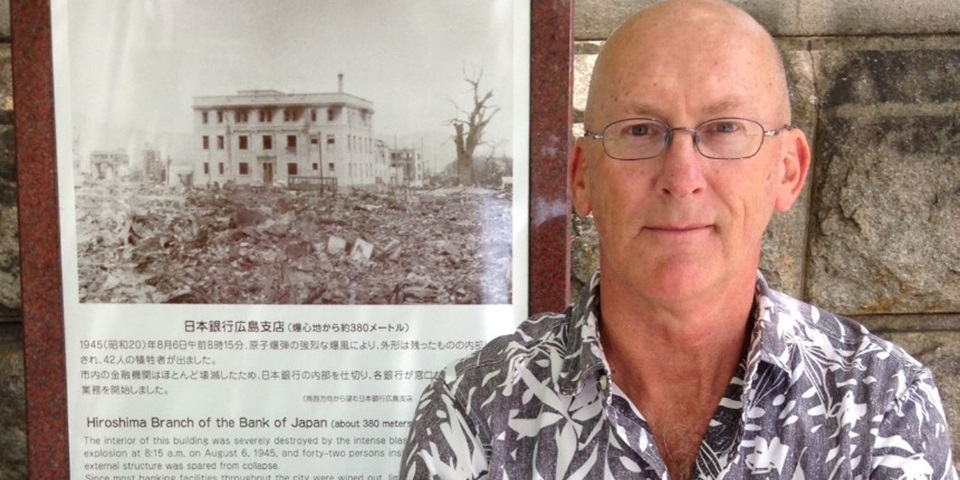News
Nuclear survivors portrait exhibition illustrates legacy of weapons testing

A Murdoch University researcher has recently returned from mounting a large, solo photographic exhibition in Japan, the latest output from his long-term project investigating the social and cultural impact of nuclear technology.
Associate Professor Mick Broderick has been interviewing hibakusha – the Japanese term for survivors of the atom bomb – since 2002, and this latest exhibition showcased photographs of the many different hibakusha he has met around the world.
The exhibition, titled Global Hibakusha Portraits, was staged in the former Bank of Japan, Hiroshima branch – one of the few buildings that survived intact after the atomic bombing of 1945. The display featured 30 images of survivors including both military veterans and people from Indigenous communities who had been living close to nuclear weapons test sites, often with second and third generation descendants.
Global Hibakusha Project
Since 2007 Professor Broderick, in collaboration with Professor Robert Jacobs from Hiroshima City University, has studied the social and cultural effects of cold war nuclear weapons tests by colonial powers (including the USA, the Soviet Union, Britain, France and China) on people under their governance and dependence.
As part of their Global Hibakusha Project, the researchers have been working within communities to help empower these nuclear survivors to record, preserve and share their stories detailing the lasting economic, medical and cultural impacts, and helping them connect with other hibakusha communities to help ensure their testimonies are passed on through the generations.
“Over decades these communities have been visited by a procession of scientists and journalists, with their stories recorded and taken away, but hibakusha often relate that they have gained little material benefit from these encounters,” Professor Broderick said.
“Our project has been about helping to facilitate the collection and sharing of testimonies within communities by community members to help families and individuals, including former military personnel, understand more about their nuclear experiences, past, present and future.
Many of these communities have been left with little to no information about the impacts of nuclear testing.
“As part of our work, we have organised workshops around the world for hibakusha descendants to learn how to use digital media and receive training on the ethics of recording oral histories.
“The process aims to build resilience and solidarity between and within communities, and raise general awareness to help them find justice and support.”
Professor Broderick’s exhibition featured representative portraits and short descriptions of the hibakusha and their descendants from Japan, the Marshall Islands, Australia, Christmas Island/Kiritimati, French Polynesia and Kazakhstan. Visitors were also able to study a map which pinpointed every area around the world where the photos were taken.
“The feedback from the exhibition was resoundingly positive. Many people, including local first generation hibakusha, told me they had no idea just how many communities around the world had been impacted by nuclear tests,” Professor Broderick said.
“Digital technologies can help such communities record their histories and honour the memories of family members who have suffered so profoundly from radiological contamination, including the lasting impacts of the uranium fuel cycle through to the nuclear disasters at Fukushima and Chernobyl.”
News
Nuclear survivors portrait exhibition illustrates legacy of weapons testing
Posted on